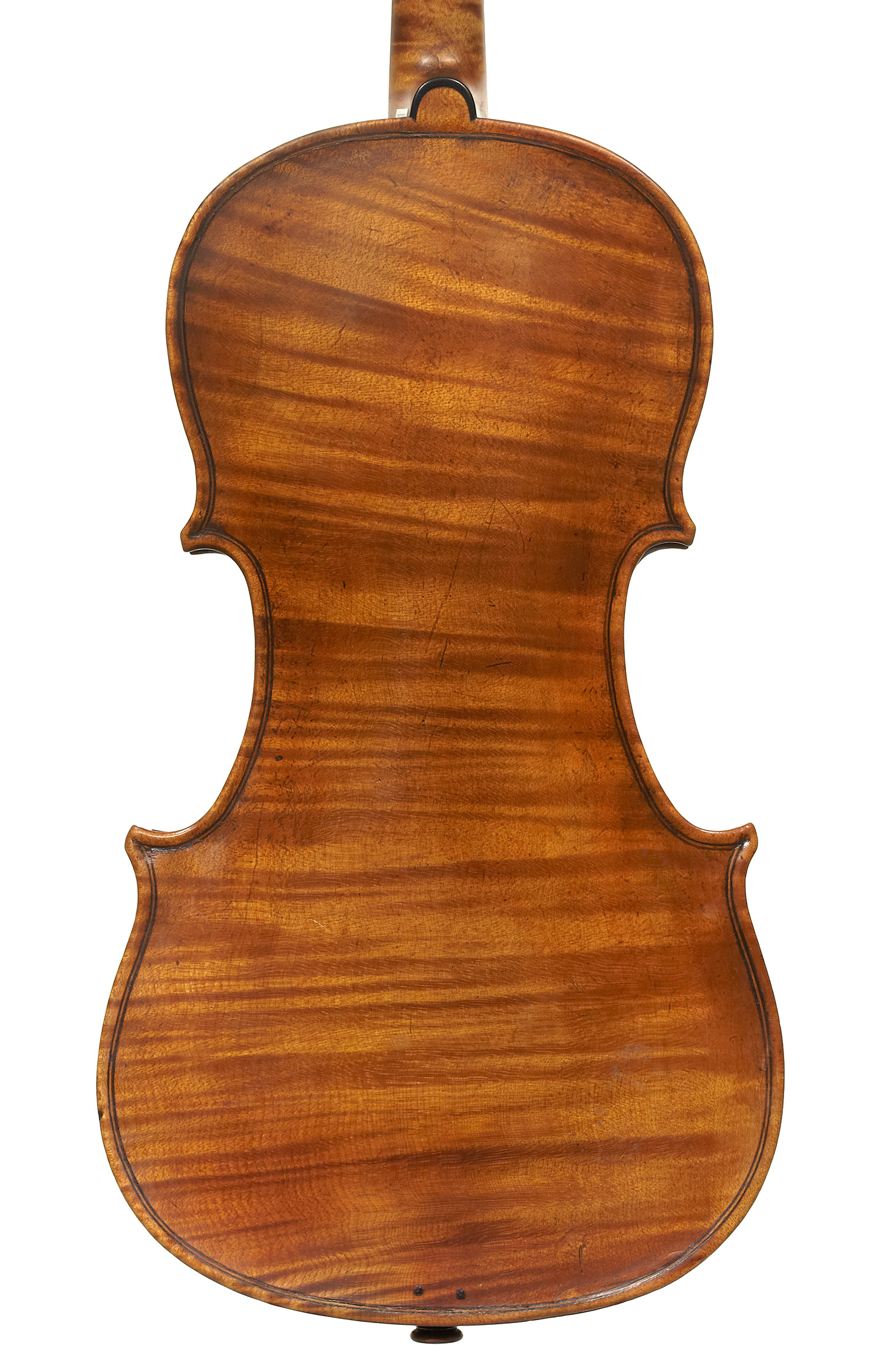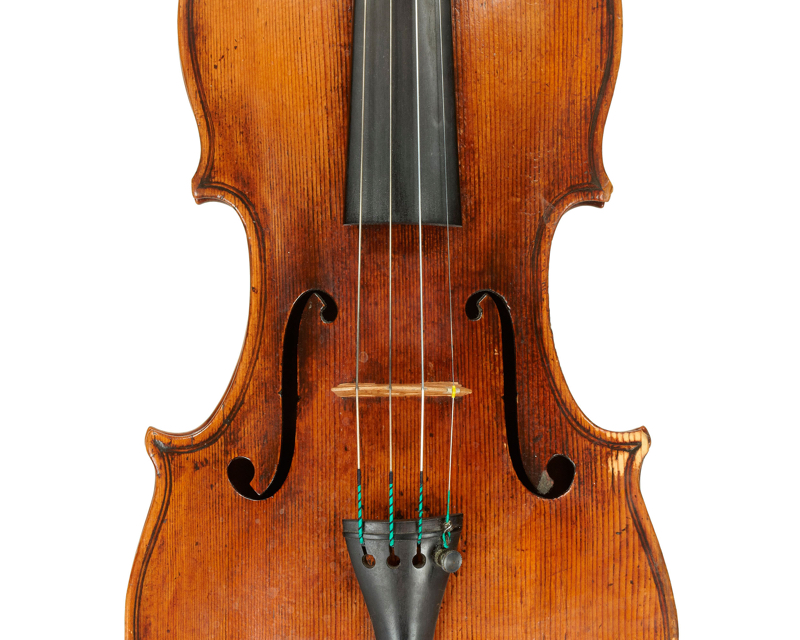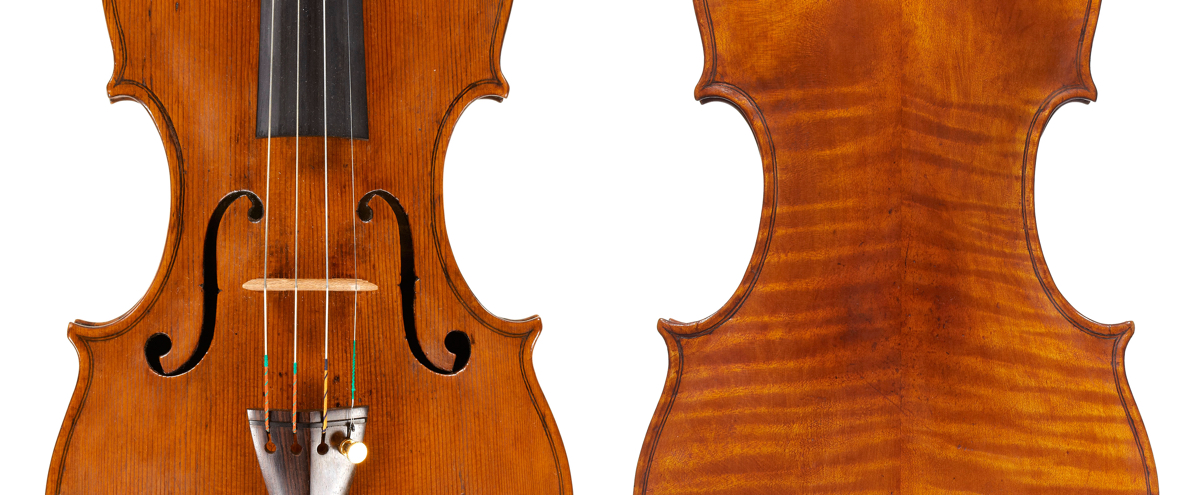The birthplace of Nicolò Paganini, Genoa had a tortured existence for much of the 18th century. Since Christopher Columbus, its fortunes had been closely tied to the Spanish conquest of the New World, but as Spanish power declined, Genoa followed. By the 18th century it was economically and militarily overstretched through the wars of Austrian Succession, and while it remained an important Italian port, trade was increasingly controlled by its neighbouring states. In 1768 it lost Corsica, the last of its overseas territories, to France and before its fortunes revived, Genoa would become part of Napoleon’s Ligurian Republic, becoming annexed to France in 1805.
Genoa was nonetheless one of the most heavily populated cities of Northern Italy, and with its large population came a demand for violins. A vibrant Genoese violin making community thrived throughout the 18th century. Better-known makers include Bernardo Calcani and Paolo Castello. Others include Jacobo Cordanus, August de Planis, Davide and Antonio Pizzarino, Antonio Pazarini and Angelo Molia.
Andrea Stanzer and Giuseppe Cavaleri, the makers of the two violins featured here, were also active in the 18th century, but their surviving work is extremely scarce.
Andrea Stanzer violin, 1722
Stanzer is an incredibly rare maker: this violin dated 1722 is one of only two examples recorded by the firm of W.E. Hill & Sons. According to the label and that of the other example known to Hills, dated 1723, Andrea Stanzer claimed to be a pupil of Girolamo Amati II: ‘Andrea Stanzer, Allevio di Germo Amati, Fecit anno 1722, Genuae.’

Violin by Andrea Stanzer, Genoa, 1722. Photo: Tarisio
The dendrochronological analysis gives a youngest tree-ring date of 1713 and strong cross matches with other Italian instruments of the period and region. However, there is no specific evidence linking the workmanship directly to the influence of Girolamo Amati. In Stanzer’s favor, Girolamo left Cremona from 1697 to 1715 to work in Piacenza, the closest major city to the north of Genoa, giving his statement greater plausibility.
Stanzer is listed under several different spellings in the dictionaries of violin makers. He is almost certainly the Andreas Statler of Genoa (fl. c. 1700), a pupil of Girolamo Amati mentioned by Vannes, and to whom Henley gives a more plausible date range of 1705–25. Henley likens one Giuseppe Stanza to Amati but with characteristically dubious information. John Dilworth uses the spelling Andreas Statler in his recently published dictionary.

Stanzer imitated the high arch of Stainer and upright soundholes
By the 1720s Stainer’s influence was widespread in Northern Italy. The upright soundholes suggest that Stanzer was attempting to follow Stainer, but his unfamiliarity with the model shows. As is typical of Italian violins of this sort, Stanzer sought to raise the arch of the belly without compromising its purity in any way. The result is to create large areas of steep arching, giving the violin a very bold feel. In addition the thick purfling gives the violin an impression of being narrower than it actually is.
The strength of the arching combined with the choice of wood immediately recalls Cremonese attempts at the new Stainer fashion, prompting cautious comparison with Guarneri ‘filius Andrea’. Although the scroll is elegant, the volutes are a little free in their positioning and the Cremonese influence is lost in favor of deep undercutting. This style appears to have influenced Antonio Pazarini and Angelo Molia, who both worked in Genoa during the following decades.
Giuseppe Cavaleri violin, 1736
Made in 1736, this violin by Giuseppe Cavaleri represents the other extreme of Stainer-influenced work in 18th-century Italy. Here again the aim of the maker was to create a high and fully formed arch, but the obvious difference is in the soundholes, which meander over the arching. They are an attempt to preserve a conventional Cremonese shape despite the fatness of the belly.

Violin by Giuseppe Cavaleri, 1736, which combines Stainer-style arching with Cremonese-shaped soundholes
Violins of this kind are most commonplace in Rome and Florence, but the concept traveled to Peter Guarneri in Venice, and south to Alessandro Gagliano in Naples. Cavaleri built this violin without using a mould, leading to characterful asymmetries, and the instrument shows the hallmarks of an experienced maker working with confidence at speed.